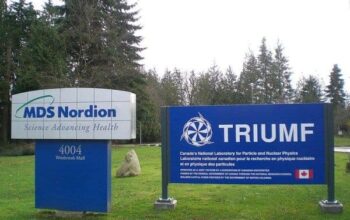The realm of medical isotopes constitutes a pivotal sector within modern nuclear medicine, playing an indispensable role in both diagnostic imaging and therapeutic interventions. The ability to accelerate the production of these isotopes can profoundly affect healthcare outcomes, positioning physics as a crucial ally in the quest for improved patient care. The production of medical isotopes is often fraught with challenges, including logistical hurdles, regulatory constraints, and the sheer complexity of the underlying nuclear processes. This inquiry delves into the acceleration of medical isotope production, examining the fundamental principles of physics that facilitate innovation in this vital field.
The fascination with medical isotopes is rooted in their transformative capacities. For instance, isotopes such as Technetium-99m (Tc-99m) serve as the workhorse of nuclear medicine, accounting for approximately 80% of all diagnostic nuclear imaging procedures. Its short half-life of six hours, coupled with its optimal gamma emissions for imaging, underscores the necessity for rapid production methods. The urgent demand for Tc-99m and other isotopes necessitates an exploration into advanced production techniques, one of the most promising being the innovation of nuclear reactors and particle accelerators.
Traditional methods of isotope production principally hinged on the use of research reactors, where neutrons are generated through nuclear fission. These reactors enable the fission of uranium fuel, subsequently leading to the generation of isotopes through neutron activation. However, this method is often limited by the reactor’s operational capacity and the availability of high-quality uranium, complicating logistics and supply chains. Moreover, regulatory compliance concerning radioactive materials can further impede production timelines. The need for efficient and scalable production methods is increasingly evident.
In contrast, particle accelerators such as cyclotrons offer an alternative approach, capable of overcoming many of the limitations associated with reactor-based production. Cyclotrons employ electromagnetic fields to accelerate charged particles—typically protons—toward a target material, commonly enriched in specific isotopes. This interaction often yields a varied array of radionuclides, including fluorine-18, which is indispensable for positron emission tomography (PET) imaging. By decoupling the isotope production process from nuclear fission, cyclotrons provide an agile response to fluctuating clinical demands, facilitating localized production and reducing transport-related complexities.
Furthermore, the advent of novel methodologies, such as utilizing alternative target materials and advanced radionuclide extraction techniques, has invigorated the field. Research is continually being conducted into optimizing target compositions to enhance yield and purity. For instance, target materials composed of lithium or aluminum can improve production efficiency through increased interactions with accelerated protons. Such innovations not only bolster output rates but also pave the way for the realization of exotic isotopes previously deemed unfeasible.
Moreover, the infusion of artificial intelligence into isotope production presents an emerging frontier. Machine learning algorithms can optimize production schedules, predict demand fluctuations, and streamline inventory management. These algorithms analyze extensive datasets to identify patterns that human operators may overlook, thereby enhancing operational efficiency. Integrating real-time data feedback loops ensures that isotopes are available precisely when needed, mitigating the logistical challenges frequently encountered in medical settings.
To appreciate the significance of these advancements, one must recognize the multifaceted applications of medical isotopes in clinical practice. Diagnostic imaging, which relies heavily on precise and timely administration of isotopes, exemplifies the life-saving potential of these materials. For instance, Tc-99m enables the visualization of various physiological processes, from cardiac perfusion to oncological assessments. This capability allows healthcare providers to diagnose conditions early, facilitating interventions that can significantly reduce morbidity and mortality.
Therapeutic applications also underscore the urgency of accelerating isotope production. Radioisotopes such as iodine-131 play a critical role in treating thyroid malignancies, offering targeted therapies that often result in enhanced patient outcomes. As the intersection between diagnostic imaging and therapeutic modalities continues to merge, the demand for isotopes that can serve dual purposes intensifies. This necessitates not only an expansion in production capabilities but also a commitment to research and development aimed at novel isotopes that may offer improved therapeutic efficacy with minimized side effects.
Environmental considerations further emphasize the necessity of efficient isotope production. As healthcare systems increasingly pivot towards sustainable practices, methods that minimize waste and reduce the carbon footprint of isotope production are paramount. Innovations such as closed-loop systems for recycling target materials and reducing radioactive waste are vital in ensuring the sustainability of isotopic production in the long term.
In conclusion, the acceleration of medical isotope production epitomizes the intersection of physics and healthcare, illustrating the profound impact of technological advancements on patient outcomes. The continuous evolution of production methodologies, characterized by the use of particle accelerators, novel target materials, and data-driven approaches, heralds a new era in nuclear medicine. As the demand for timely and efficient isotope delivery intensifies, the commitment to exploring innovative solutions is unwavering. This ongoing pursuit not only represents a triumph of scientific ingenuity but also embodies a collective aspiration to enhance the quality of life through the applications of physics in medicine.












